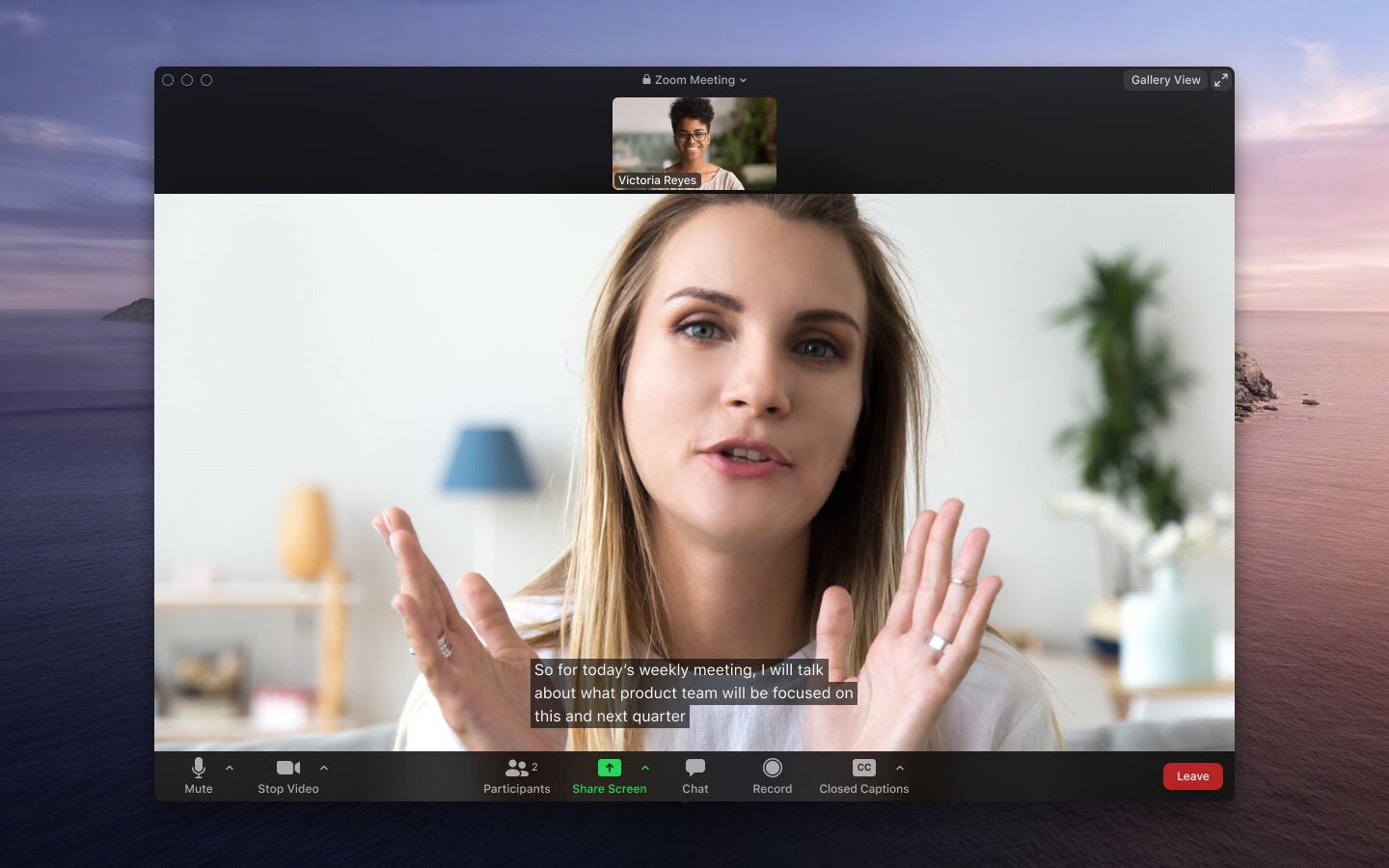Online video conferencing apps add live captions
Online Video Conferencing Grew Exponentially in 2020
Zoom AI-generated closed captions. Image: Zoom
2020 changed the ways in which we communicate. Very suddenly, in-person gatherings and celebrations shifted online, just as businesses went remote in most countries. With mass populations resolved to stay at home, we quickly learned that phone calls with friends, family and colleagues just weren't the same as face-to-face interactions. Video conferencing gained rapid popularity as a result. In fact, video conferencing apps saw 62 million downloads in just one week of March 2020, after lockdowns were put into place.
Video Conferencing Challenging for the Hearing Impaired
While services like Zoom, Google Meet, and Microsoft Teams quickly connected people with audio and video, those with trouble hearing still experienced familiar challenges: sometimes the audio quality didn’t allow for clear conversations, depending on internet speed and strength or cell signal. Other times, background noises interfered with conversation. Children, pets, traffic and background music can quickly muddle voices, making it difficult to converse. This became such an issue that the HLAA published a position paper advocating for video conferencing platforms to include automatic captioning technology as part of their free tiers, so all could access this, not just premium customers.
Zoom’s Live Transcription is Coming Fall 2021
Zoom, which saw more than 300 million meeting participants per day in 2020, does have closed captioning and transcription features, which have historically required a Zoom cloud account. In a statement last month, Zoom announced that Live Transcription, its branded version of automatic closed captioning, will be available to all users by Fall 2021.
The HeardThat team turned on Zoom’s Live Transcription and accessed a transcript after a recent meeting.
Google has also included live captions on their Google Meet platform (directions on how to turn this feature on can be found here). They’ve taken accessibility another step and added its Live Caption feature to Google Chrome for desktops. This enables users to access Live Caption when using Google Chrome to watch videos on a variety of sites like Vimeo and YouTube. We’re excited to see this technology improve for Chrome.
Our team is happy to see captions and transcript options on communications platforms. HeardThat works with transcription apps, like Google’s Live Caption, on the Google Pixel and other supported phones. This is an area we continue to explore as smartphone innovation advances.


